Ray crisis: unregulated exploitation of ray species along the Dangme coastline in Ghana
The conservation of rays has garnered increasing global attention from researchers, conservationists, governments, and coastal communities. However, this growing concern has yet to reach many parts of Africa, particularly Ghana, where rays continue to face severe and largely unchecked exploitation.
Rays are a distinct group of marine fauna inhabiting the Atlantic Ocean off Ghana’s southern coast. Despite their ecological importance and significant role in coastal livelihoods, they are not officially recognized by Ghana’s Fisheries Commission as a key component of the country’s growing fishing industry. Ironically, rays constitute a substantial proportion of local catches, driven by the highly profitable fin trade and rising demand for alternative protein sources among coastal populations.
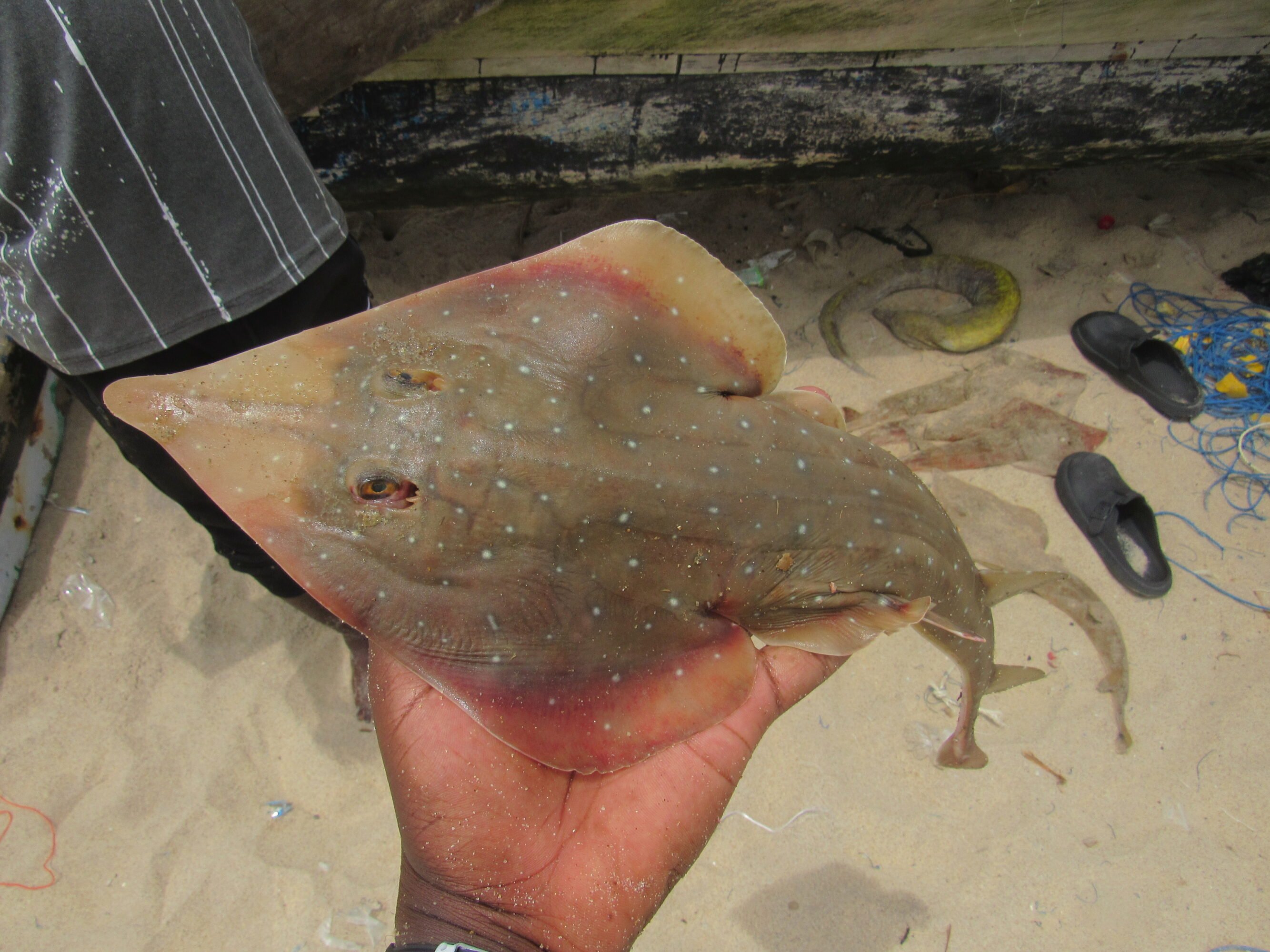
Neonate of whitespotted guitarfish. Photo © Bernard Eshun
Lolonya, located along the Dangme coastline, is of the primary ray-fishing hub in the Ada West District of the Greater Accra Region. In this community, rays are captured both through targeted fishing and as incidental bycatch. In the absence of regulatory oversight or specific fishing guidelines, rays are harvested indiscriminately, with individuals ranging from neonates to adults regularly landed.
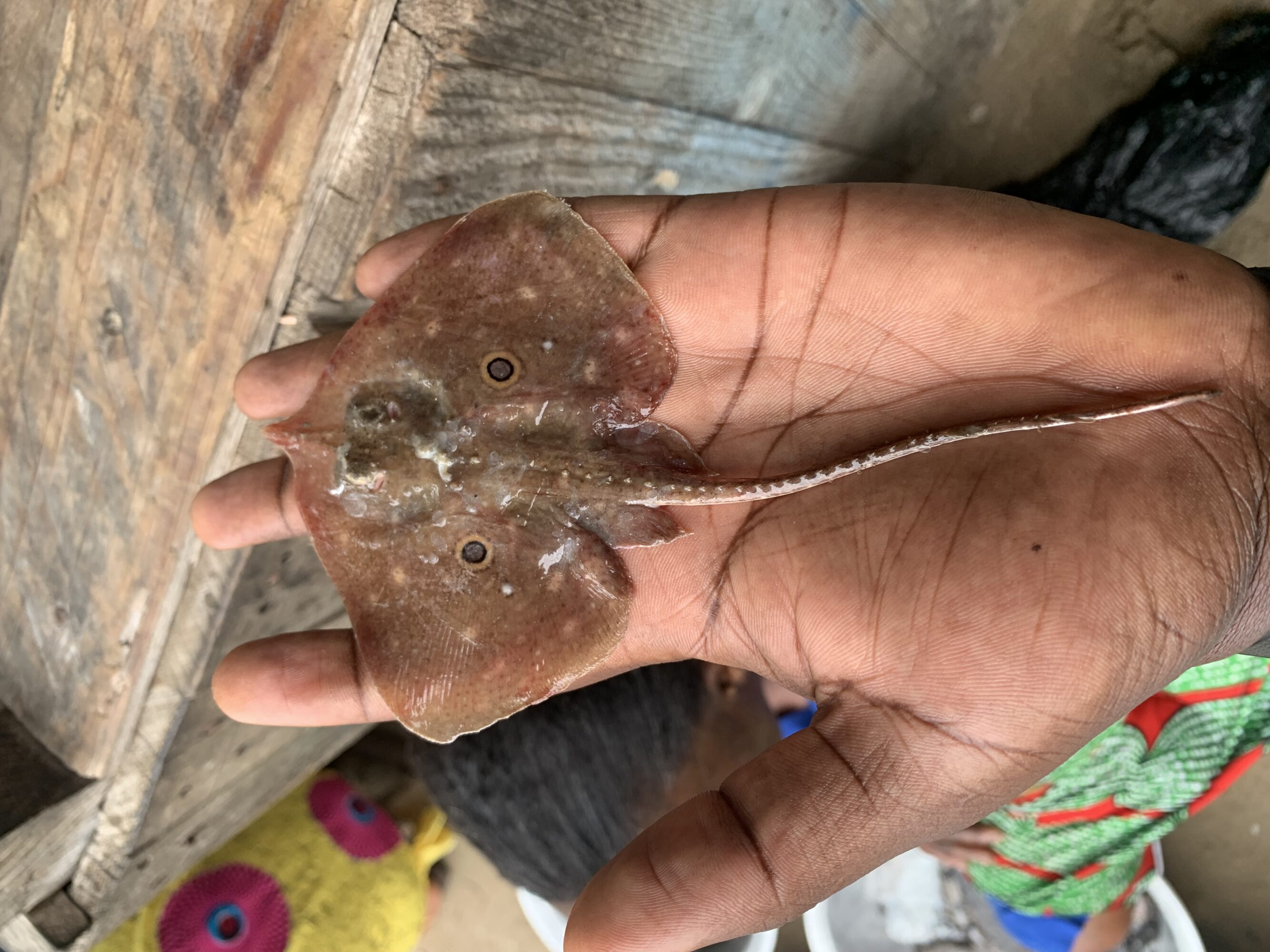
Neonate of African brown skate. Photo © Bernard Eshun
The situation is exacerbated by the modification of fishing gear. The commonly used drift gillnet, already efficient at catching rays, is often enhanced with j-hooks to increase catch rates. This results in indiscriminate harvesting across life stages, and most fishers remain unaware of the conservation status of ray species, many of which are listed as Critically Endangered by the International Union for Conservation of Nature (IUCN) Red List.
The ray fishery in Lolonya operates year-round, with peak harvesting between August and December. During this season, rays are landed in batches of 2–4 individuals per species. Thirty fishing boats actively target large ray species such as the blackchin guitarfish, common guitarfish, whitespotted guitarfish, spineback guitarfish, and pelagic stingray. These boats operate every third night, resulting in an estimated catch of 20–40 individuals per species monthly. Over five months, this totals approximately 100–200 individuals per species. Therefore, the total number of rays captured during this period is estimated at 700 to 1,400.
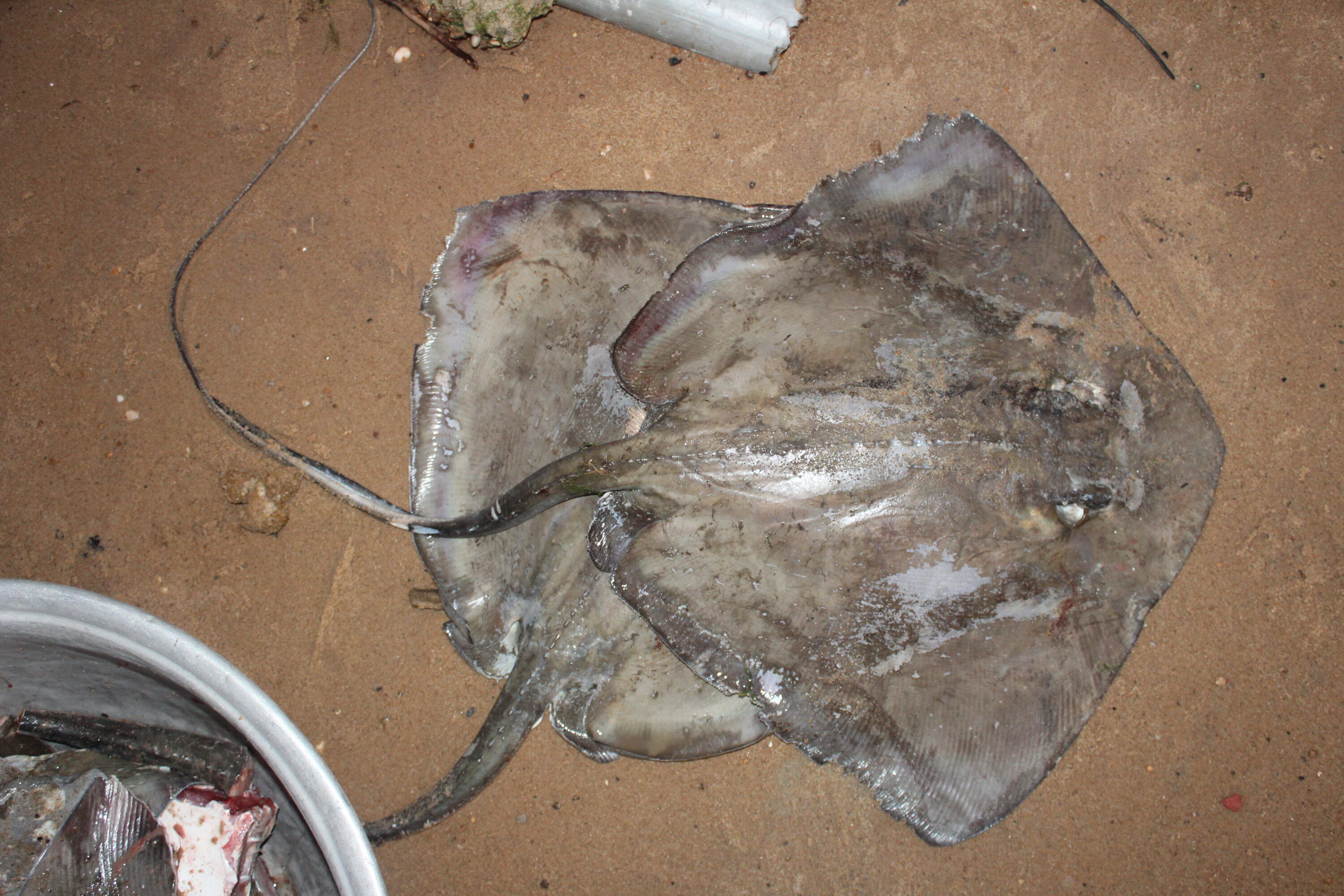
Mature Pelagic Stingray. Photo © Bernard Eshun
Extrapolated over five years, this equates to 3,500–7,000 individuals per species, a deeply unsustainable rate of exploitation. This overharvesting could lead to the local extinction of these species, many of which, including all guitarfishes, are listed as Critically Endangered on the IUCN Red List. Ultimately, this could trigger the collapse of the local marine ecosystem and the fisheries and livelihoods that depend on it.
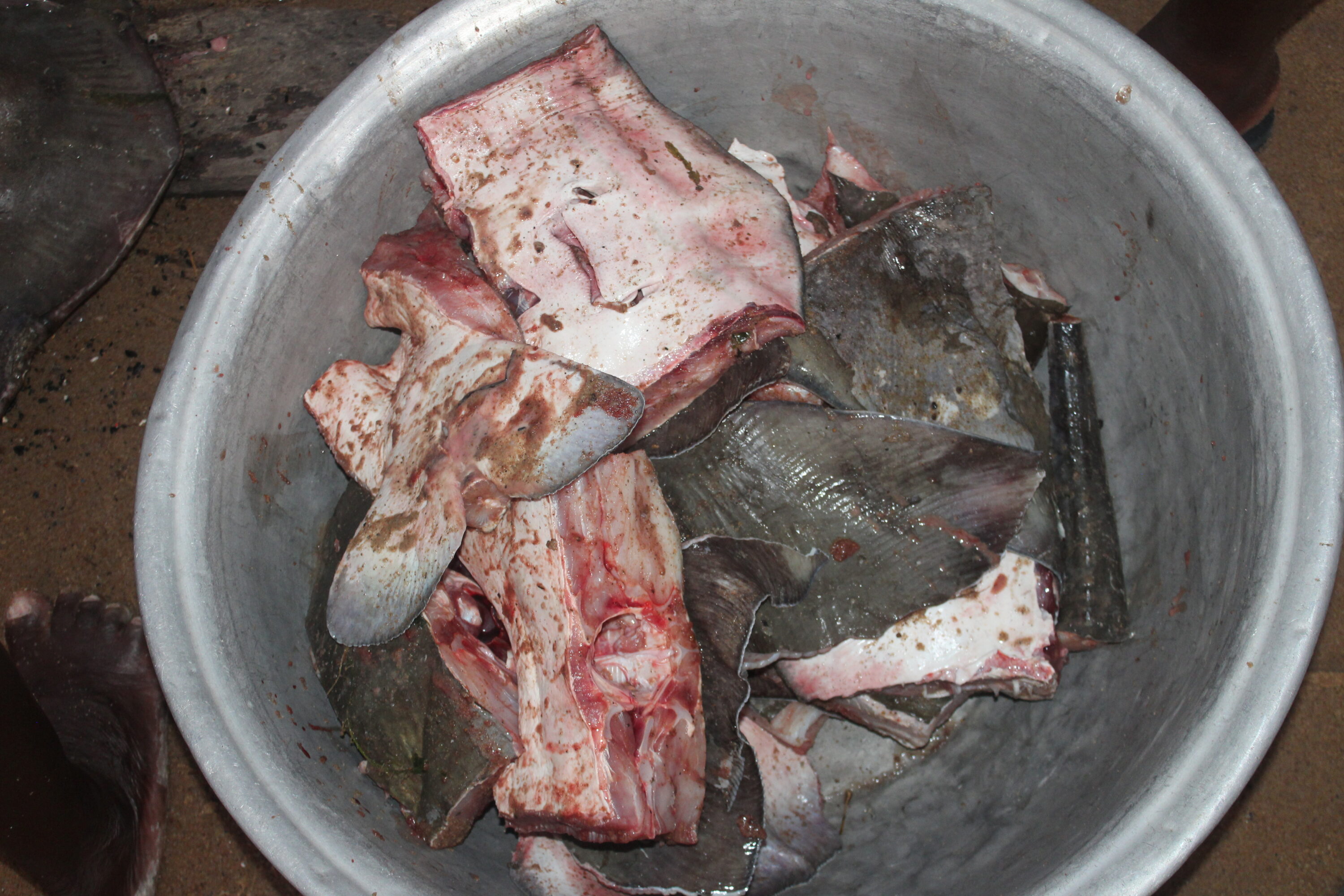
Butched Pelagic Stingray for Sale. Photo © Bernard Eshun
While economically profitable to the trade actors, the absence of formal management measures, such as closed seasons, by-catch release, size-selective fishing, gear restrictions, and protected areas, has led to unregulated, unmonitored, and indiscriminate harvesting practices. The use of the modified drift gillnets, contribute significantly to unsustainable catch rates (across all life stages), trending towards the depletion of ray populations.
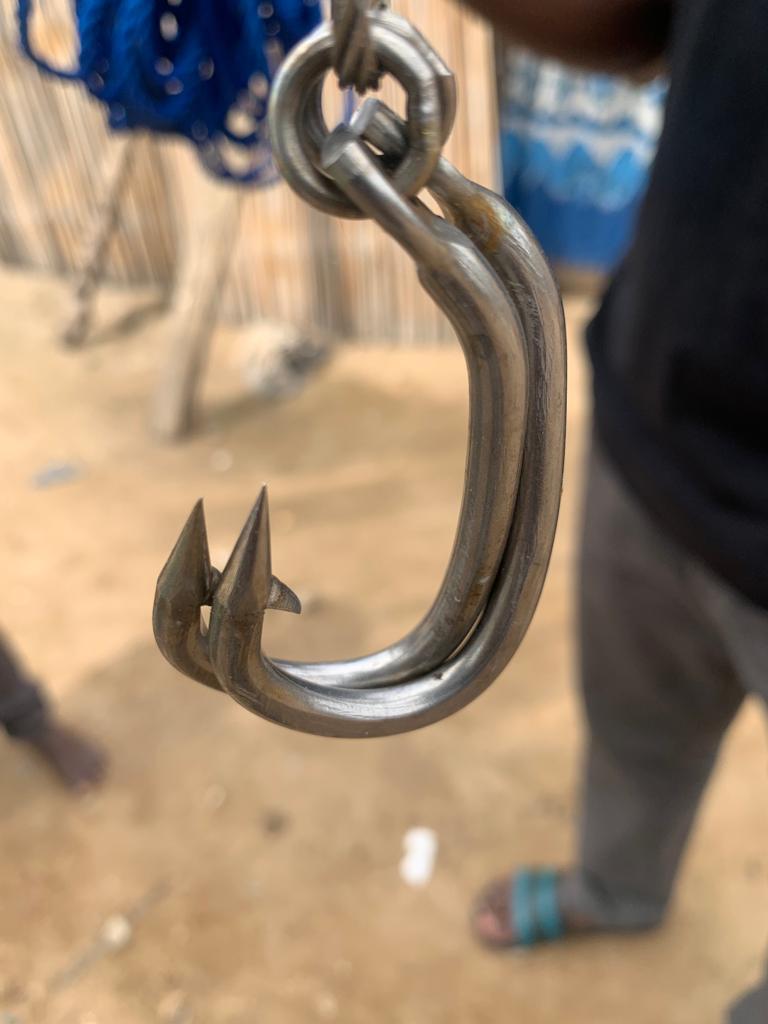
J-hook. Photo © Bernard Eshun
To avert this ecological and economic crisis, urgent action is required. Establishing a community-based marine protected area, developing and enforcing a regulatory framework, enhancing monitoring and data collection, scaling up conservation education, and formalising multi-stakeholder collaborations are essential steps toward sustainable ray fisheries management along the Dangme coastline.
